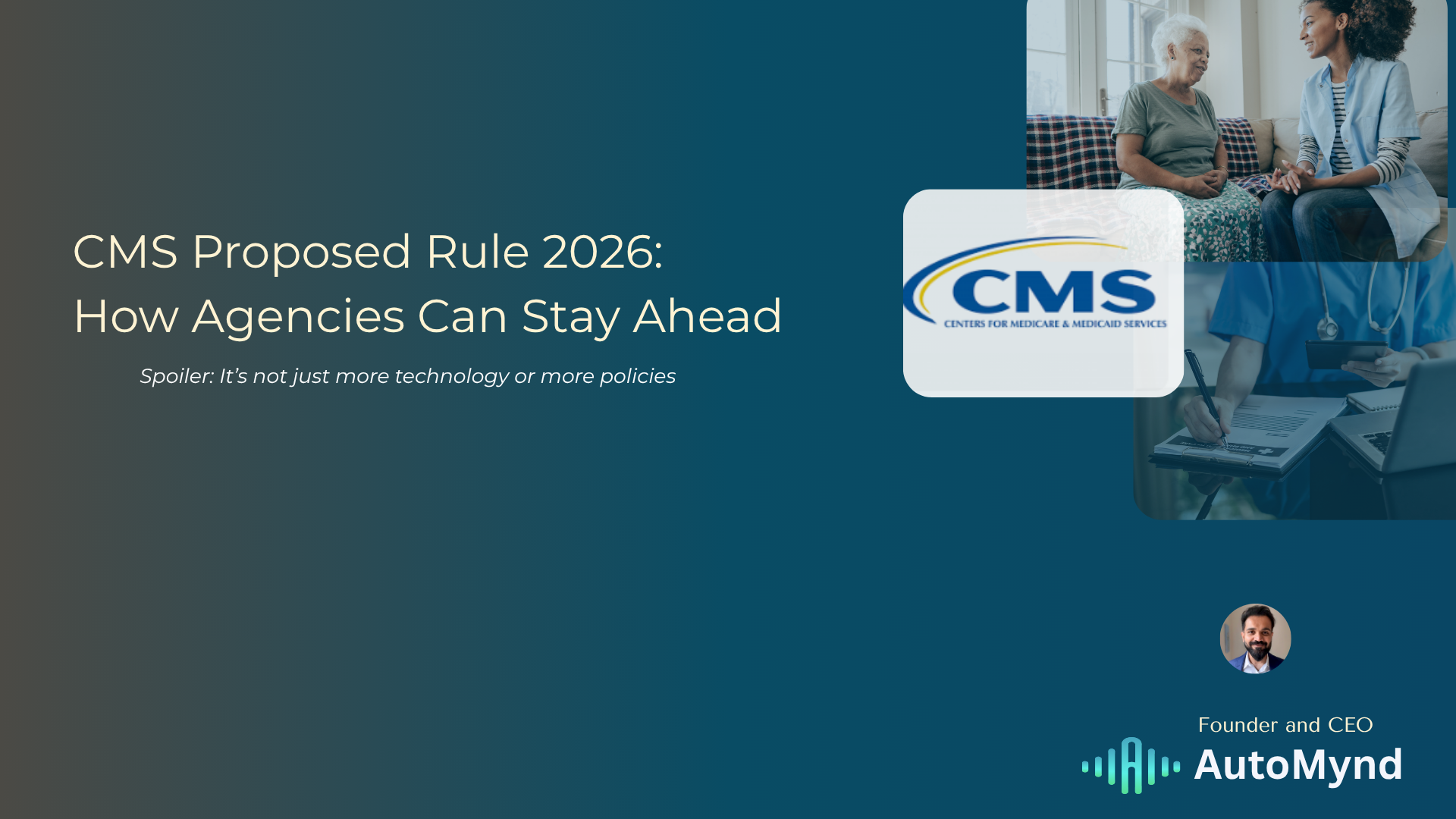NEW: Butte Home Health & Hospice is raising the bar for both patient and clinician experience by deploying AutoMynd’s AI Platform. Read more →

The CMS Proposed Rule 2026 is here, and it’s making waves across the home health industry. This year’s proposal includes a 6.4% payment cut, recalibration of PDGM case-mix weights, new LUPA thresholds, expanded face-to-face encounter rules, and updates to the Home Health Quality Reporting Program (HH QRP) and Value-Based Purchasing (HHVBP) model.
If you’re a home health agency leader, you already know these aren’t just policy tweaks — they’re operational shifts that could affect your bottom line, compliance, and team morale. The question is not if you’ll adapt, but how.
When regulations tighten, the default reaction is often more checklists, more oversight, and more “urgent” meetings. But the most effective changes I’ve seen in agencies start with listening to the people doing the work every day.
Ask your clinicians, schedulers, and QA teams:
The answers to these questions often reveal hidden inefficiencies — and fixing them costs far less than overhauling your entire tech stack.
Here’s what to watch:
The agencies that consistently perform well under CMS changes aren’t necessarily the ones with the flashiest software. They’re the ones where leadership actively removes barriers, aligns processes with PDGM and HHVBP requirements, and creates space for clinicians to focus on patient care.
Sometimes that’s a process change. Sometimes it’s updating acceptance-to-service policies. And yes, sometimes it’s adopting a tool — like AutoMynd — that automates repetitive documentation tasks. But technology works best when the culture already supports change.
As the CMS Proposed Rule 2026 moves toward finalization, I challenge agency leaders to look beyond policy and think about readiness in human terms:
See the bottlenecks. Hear the frustrations. Then act quickly — whether that’s removing a redundant form, rethinking visit scheduling, or clarifying documentation expectations.
If AI Plaforms like AutoMynd can help amplify that culture of efficiency and compliance, great. But remember: transformation starts with leadership..